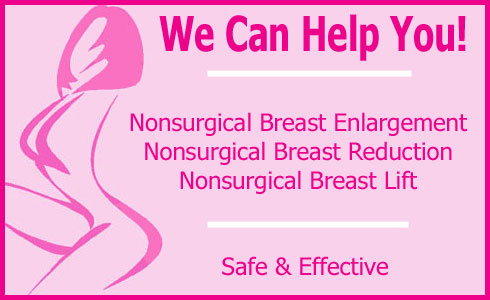
There are a number of breast implant risks which might immediately or eventually affect any woman undergoing augmentation surgery. While the implants themselves have generally been proven to be safe, and not to cause any general or specific disease processes, there are still a variety of ways in which breast implants can cause problematic anatomical health conditions.
This report provides some crucial points to consider carefully, before acquiescing to undergo any variety of breast enlargement surgery.
History of Breast Implant Risks
All breast implants are made with a silicone shell. Some varieties are filled with saline solution and others are filled with various forms of silicone gel.
During the 1970’s and 1980’s many women who received second generation silicone implants suffered shell ruptures and silicone migration into their bodies. These cases fueled a media blitz, which instantly condemned the silicone breast implant as a serious health risk. The products were removed from general use in the US for 14 years, while the FDA studied a number of health concerns linked to silicone being introduced into the organic bodily systems.
After exhaustive studies, silicone implants were cleared across the board as a safe device, when used properly for cosmetic or reconstructive breast enlargement.
During the time silicone was off the market, saline ruled the cosmetic surgery world, being the only safe alternative. Although silicone prostheses are back now in full force, saline breast implants remain popular due to procedural advances such as the scarless TUBA approach.
Most Common Risks of Breast Implants
While the implants might be biocompatible and safe for use inside the human body, they can still cause many problems. Before undergoing a breast enlargement procedure, it is crucial that you understand that complications can occur. Of course, many of these complications can be prevented and serious problems rarely occur in women who plan their operations carefully.
Typical breast implant complications include:
Capsular contracture can cause problems which might require implant revision surgery or even complete implant removal. Contracture is more commonly experienced by women undergoing breast reconstruction than women who are undergoing simple cosmetic augmentation.
Bottoming out is a rare, but potentially difficult to correct, condition which is often associated with poor surgical technique, especially during inframammary augmentation procedures.
Synmastia is a very rare, but also highly treatment-resistant, problem also associated with bad surgical technique. This condition usually results from over dissection of the implant pocket, leading to migration of the implants towards the middle of the chest.
Double bubble is not usually the result of an implant issue, but a poor surgical decision. Most patients who experience double bubble do so because they really needed a mastopexy in addition to an augmentation. Many women develop double bubble after having implants for an extended period of time. Even though their implants might still be properly positioned, their natural breast tissue has become ptotic, causing this easy to correct condition.
Breast implant rupture can occur due to surgical placement issues, activity-related causes, simple device failure or idiopathic reasons. There is a good chance that you will need to replace your implants at least once. Some women might need to replace their breast implants several times over the course of a lifetime. New cohesive silicone gel implants are likely to last far longer than other types of implant designs due to their solid jelly construction.
Implant wrinkling or rippling is usually the result of a poor choice of implant size or profile. An implant should be smaller in diameter than the base diameter of the natural breast tissue. If you want a large size, but have a narrow chest with smaller diameter breasts; consider using high profile implants to reduce visual deformity in the implant shell.
Mitigating Breast Implant Risks
Most of these risks and complications can be prevented through proper surgical planning procedures.
Choosing your surgeon is the most important factor in determining perfect postoperative results.
Next, choosing the ideal procedure, implant style and size will cut down your risks even further.
Finally, being healthy, inside and out, and following your doctor’s instructions to the letter, will help ensure a speedy and efficient recovery process.
Remember to communicate with your plastic surgeon about any concerns you might have. Once you have undergone surgery, it might be too late to address many issues which might become apparent. Ask lots of questions and be sure to listen to the answers. We know this sounds like common sense, but you would be surprised just how many women disregard important information from their doctor.




